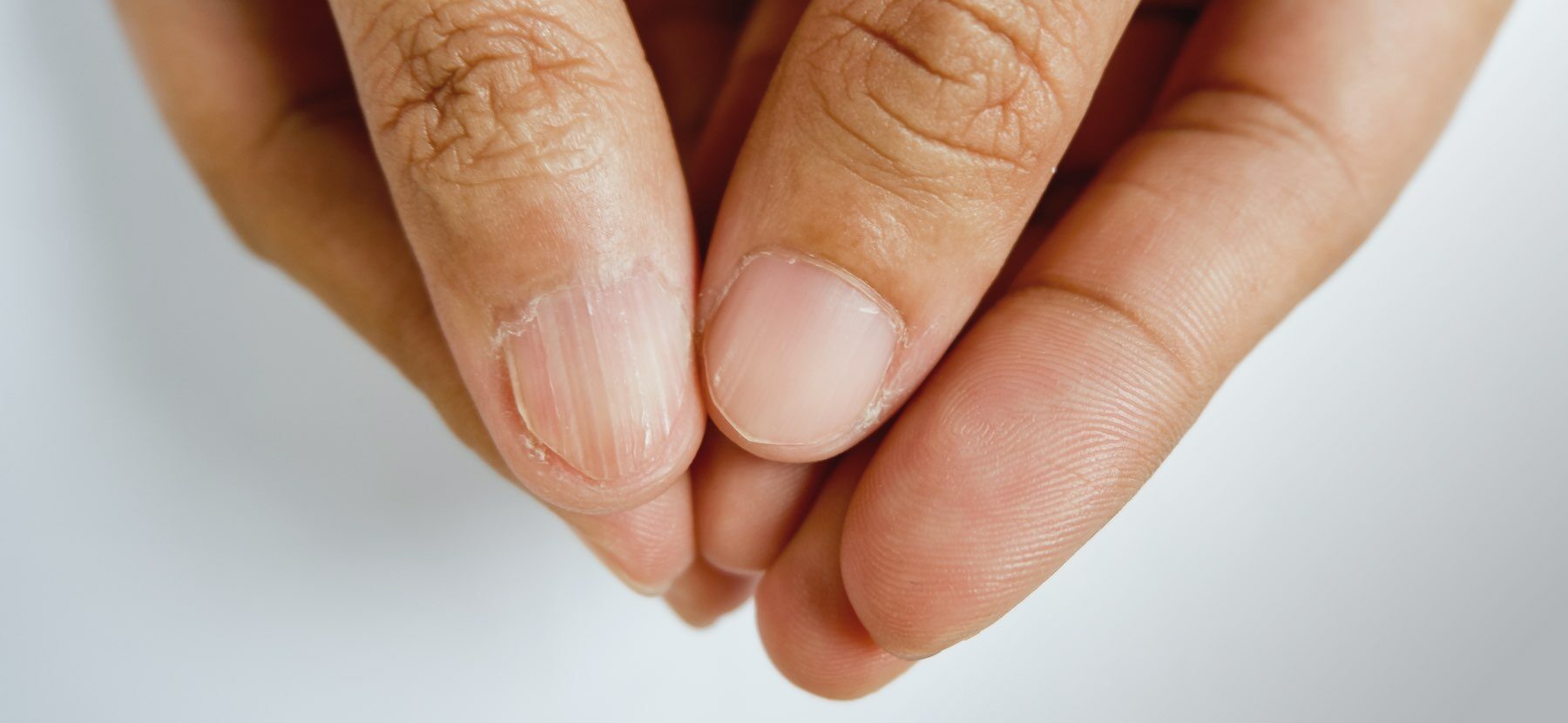Iron deficiency: causes, symptoms and treatment options
Iron deficiency can limit well-being and performance. Learn more about proper nutrition and targeted infusions.

Iron deficiency is the term used when the intake of iron over a long period of time is less than the loss of iron through physiological processes. This can have serious health consequences, severely limiting well-being and physical performance. In this guide, you will learn how to deal with deficiency symptoms and which foods can meet your iron needs..
Deficiency symptoms put many people to the test. Iron deficiency is one of the most common – about 8% of the population have or have already had to deal with the condition known in technical language as sideropenia.
Iron is involved in a variety of processes in the body. Thus, it plays a role in the transport of oxygen and blood formation, as well as in cell growth and differentiation. If the body lacks iron, this sometimes has serious consequences, ranging from iron deficiency anemia to concentration problems and growth disorders of hair and nails..
General information: What happens to iron in the body
Normally, there are between two and four grams of iron in the human body. About 60% of it is bound to hemoglobin (red blood pigment) or erythrocytes (red blood cells) in the bloodstream. The transport protein transferrin brings the iron to the places in the body where it is needed or stored in the form of ferritin and hemosiderin..
At the same time, the body is constantly losing iron. While iron from the bloodstream is used to form blood in the bone marrow, for example, about one to two milligrams of iron are lost daily through dead skin and mucous membrane cells, urine, stool and sweat. In addition, bleeding leads to increased iron loss..
Particularly women, competitive athletes, seniors and chronically ill people are therefore particularly often affected. However, various diets such as vegetarianism or veganism, frequent blood donations or the wrong diet can also lead to deficiency symptoms, if no sufficient compensation for the daily iron loss of the body is created..
Causes of iron deficiency
Normally, this compensation is provided by the diet. However, since the absorption of iron through the digestive tract is associated with high losses, about ten times the daily iron loss is necessary to compensate. Therefore, four factors come into question as causes of iron deficiency
- With a vegetarian or vegan diet, the body not only receives less iron, but also more difficult-to-digest forms of the trace element. Thus, iron is bound in meat, poultry, and fish in the form of so-called heme iron, while fruits, vegetables, and grains contain other compounds that are absorbed with less efficiency.
- The body’s ability to absorb iron through the small intestine is influenced by several biochemical factors. For example, malnutrition or nutritional deficiencies, gastric ulcers, intestinal mucosal diseases, and consumption of certain foods cause a decrease in absorption capacity. In addition, a reduced absorption capacity can be genetically determined – but this is very rare.
- Through blood loss, correspondingly higher amounts of iron are also lost. Especially with a heavy menstrual bleeding (hypermenorrhea), heavy intermenstrual bleeding or bleeding in the gastrointestinal tract, it is therefore increased to deficiency symptoms.
- Depending on various factors also increases the iron requirement of the body. For example, deficiency symptoms sometimes occur in children during growth phases, while in pregnant women the iron requirement increases by around 40% and remains high during breastfeeding. Also competitive athletes usually have an increased iron requirement, since their bodies are exposed to greater stress.
These causes are partly in interaction with each other. For example, a reduced intake of iron can also affect the absorption capacity in the long term. This is also one of the reasons why advanced deficiency symptoms are difficult to remedy by changing the diet itself.
Symptoms of iron deficiency: the three stages of iron deficiency
In some cases, a deficiency of iron first becomes noticeable through fatigue and impaired concentration and performance. These symptoms result from a deficit of red blood cells, which are responsible for transporting oxygen in the blood. This is therefore referred to as iron deficiency anemia. In addition, symptoms also occur in the rest of the body, which vary according to the severity of the deficiency symptoms and increase over time if left untreated. Experts therefore divide the course into three stages.
1st stage: depletion of iron reserves
In the first stage, the iron deficiency in many cases remains asymptomatic and thus unnoticed. If too little iron is absorbed, the body uses up the iron reserves stored mainly in the liver and spleen and in the bone marrow. It therefore does not yet come to a noticeable impairment.
2nd stage: release of iron from the bloodstream
When the body’s own iron reserves are running low, the first symptoms appear. The body begins to leach iron from transferrin to ensure the formation of sufficient red blood cells. The associated deficiency symptoms first become noticeable on the skin as well as on the mucous membranes. It results in a burning sensation on the tongue, the so-called Plummer-Vinson syndrome, as well as pain when swallowing and rhagades of the corners of the mouth. Furthermore, iron deficiency at this stage is manifested by dry, itchy skin, brittle hair and the first signs of hair loss.
3rd stage: Impairment of body functions
If the transferrin concentration in the blood decreases further, it comes to impairments of body functions – the third, potentially dangerous stage of iron deficiency. In addition to the previous symptoms, this manifests itself as headaches, sleep disturbances, chronic fatigue and exhaustion, and listlessness. Patients also usually appear pale, as is typical of anemia. If there is no treatment, the physical performance decreases further – even small efforts lead to shortness of breath.
Medical support for iron deficiency
If there is a suspicion of iron deficiency or already show the first symptoms, those affected should therefore not hesitate to see a doctor. This supports the cause research and advises on it building on the further procedure..
The initial diagnosis is made in most cases by a blood test. Here you should insist on having the values for ferritin and transferrin determined in addition to the iron concentration in the blood. The ratio of these values to the iron concentration provides information about possible causes. Thus, reduced iron and ferritin values, for example, speak for an inflammation..
In addition, the doctor may order a bone marrow examination, if he considers it useful. This is usually taken from the hip bone some bone marrow to test for traces of iron.
Therapeutic options and medical treatment
In the case of iron deficiency, medical treatment is designed to restore a normal level of the body’s iron reserves. For this purpose, the doctor prescribes iron supplements in the form of tablets or infusions.
The latter are generally associated with fewer side effects and work more quickly, but must be administered under the supervision of medical personnel. Especially for sufferers who want to get back on their feet quickly, an iron infusion is therefore the option of choice.
On the other hand, self-medication with iron supplements is not advisable – in the worst case, too high a dosage threatens iron poisoning, which can lead to stomach pain and vomiting diarrhea.
It’s all in the mix: Iron absorption promoters and iron blockers
If patients with iron deficiency want to support the therapy sensibly, they should approach this in consultation with the doctor by changing their diet. However, it is not enough to take as much iron as possible, for example, by drinking juices with added iron..
Much more, the increase in iron intake is only the first step. In addition, you should be aware of which foods promote or inhibit the absorption of iron. It is self-evidently not necessary to categorically renounce so-called iron blockers – but you should avoid combining them with iron-containing meals.
Iron-containing foods
Even meat, fish and poultry are known for a high iron content, but lose much of the easily processed heme iron if they are heated too high or too long. Ideal iron suppliers among meat dishes are therefore red meat and liver and offal..
Who prefers to do without meat, can instead resort to whole grains, oatmeal, nuts and legumes such as lentils and white beans. Sesame and pistachios in particular have a high iron content. However, it should be noted that the iron compounds present in these foods are more difficult for the body to absorb than heme iron. In addition, they are often present in combination with iron absorption inhibitors such as phytic acid and plant proteins.
Iron absorption promoters
Further, the absorption of iron can be promoted by acidic foods. For example, a low pH supports chemical reactions in the gastrointestinal tract that break down iron compounds into usable components. Fruits and fruit juices are particularly good acid suppliers, because they also contain vitamin C..
Vitamin C is the second essential iron absorption promoter. In addition to citrus fruits such as lemons, limes and oranges, it is found in most fruits and vegetables and their juices. Since vitamin C does not tolerate heat, foods with high vitamin C content should not be heated if possible.
Iron absorption inhibitors
Inhibits the absorption of iron, however, by phytic and oxalic acid and their salts, polyphenols, calcium salts and plant proteins. Furthermore, the presence of other metal ions also hinders the absorption of iron. You should therefore abstain from such iron blockers for about half an hour before eating and for at least two hours after eating, if you want to meet your iron requirements..
Due to the high calcium content, affected people should not consume iron suppliers together with milk or dairy products, if possible. Likewise, they should avoid grape juice, coffee, tea and red wine when eating. These drinks contain polyphenols, which also hinder iron absorption. Cola and lemonade are also iron blockers, because they receive an increased amount of phosphates..
Phytic acid and its salts, phytates, are found mainly in cereals, corn, rice and legumes such as soy and foods made from them. They are also one of the reasons why whole grain products alone may not be sufficient to meet the iron requirement..
Oxalic acid and oxalates are found mainly in spinach, rhubarb, cocoa and beet. Like phytic acid, oxalic acid also reacts with iron and thus prevents its absorption.
Suspect iron deficiency? Contact us!
As a qualified iron center, we help you improve your quality of life. Our specialized iron therapy results in a gradual increase in iron levels. Our treatment in the form of injections via the vein ensures that your iron level remains at an optimal level over a long period of time.





